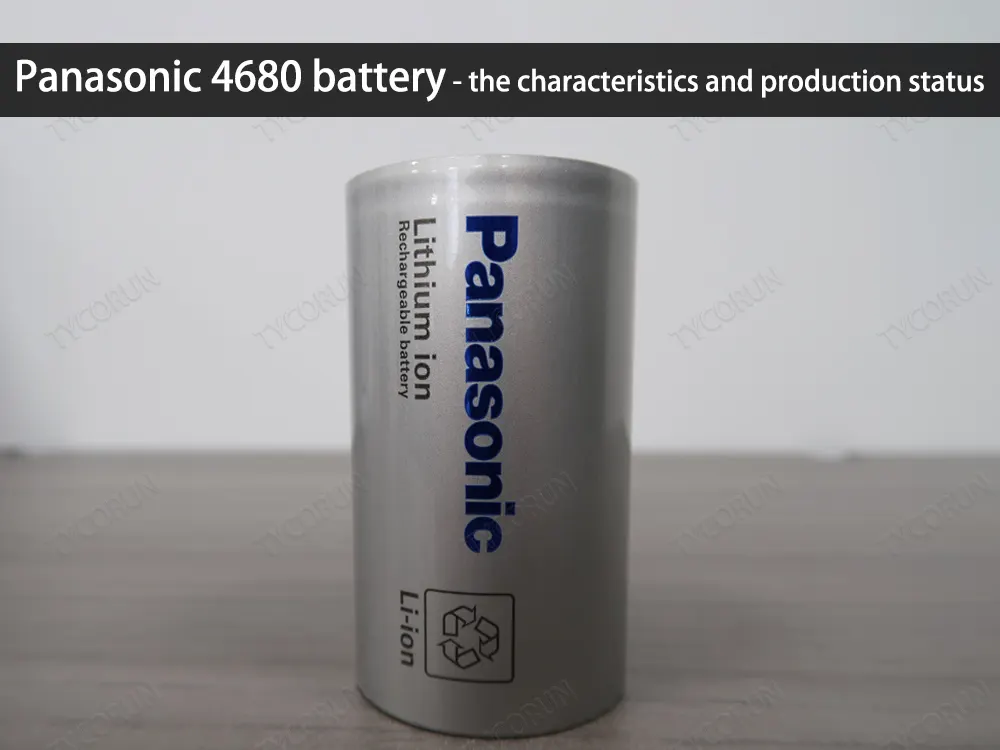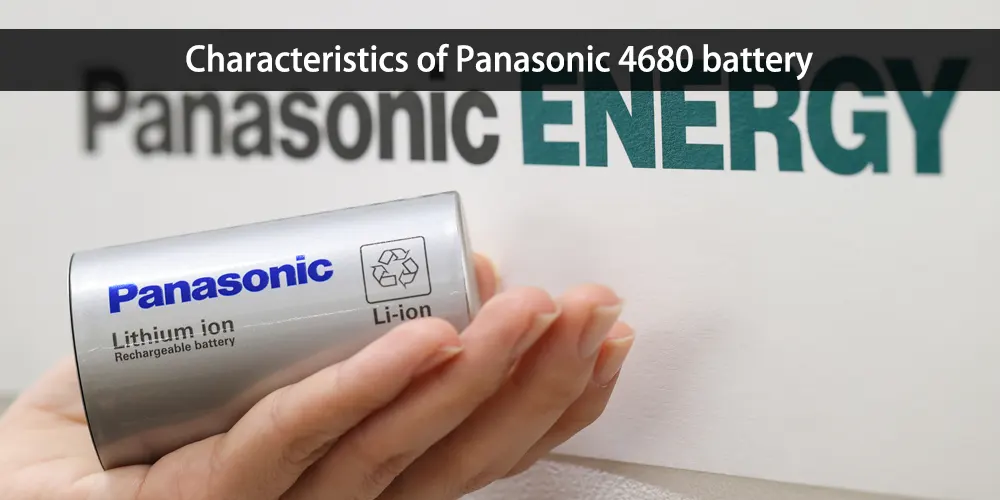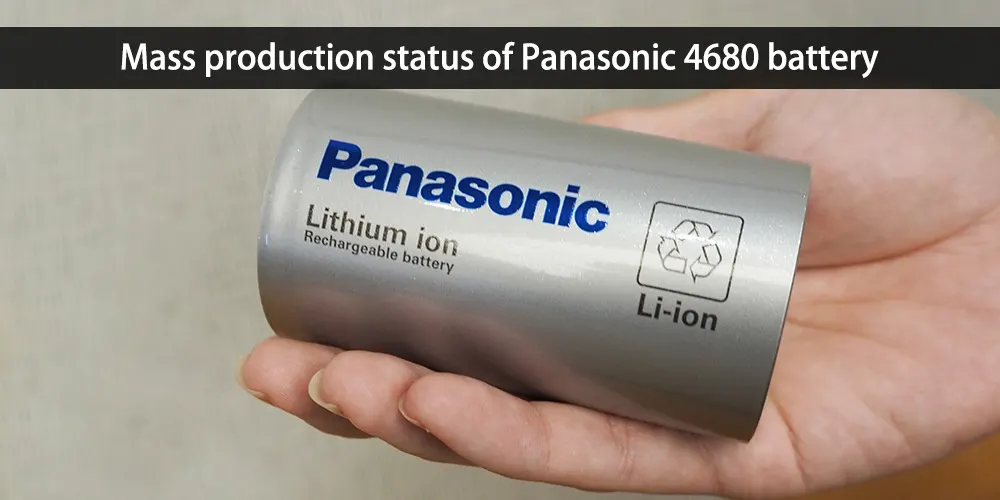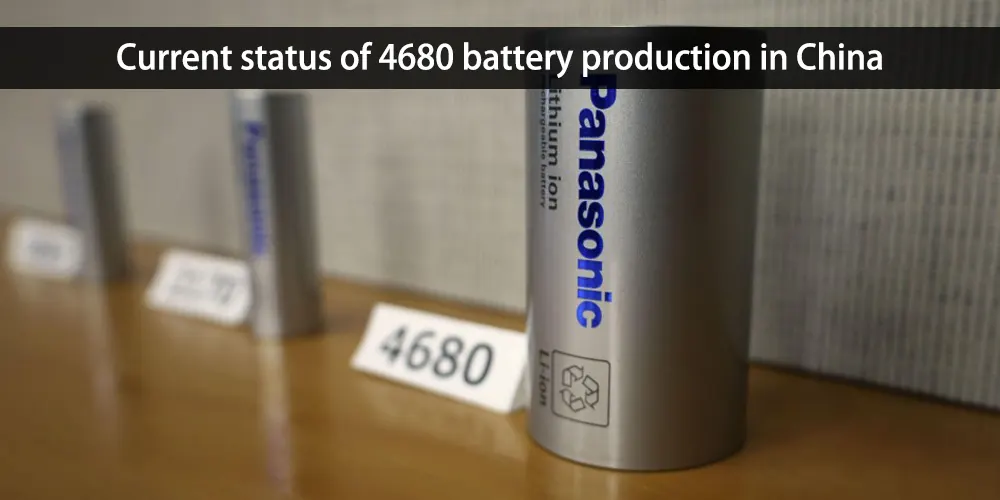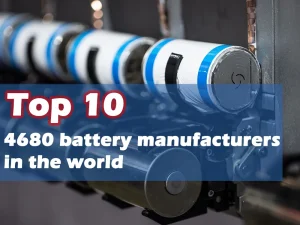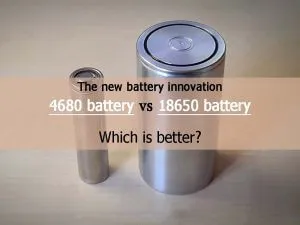Home » lithium ion battery knowledge » Panasonic 4680 battery – the characteristics and production status
Panasonic 4680 battery - the characteristics and production status
In recent years, through the efforts of leading lithium battery manufacturers, 4680 battery technology has been improved day by day and is facing a major leap forward. With the gradual deepening of global electrification, 4680 battery will play an extremely important role in it.
Among these companies, Panasonic is also one of the manufacturers that is committed to the mass production of 4680 battery. This article will introduce the characteristics and mass production status of Panasonic 4680 battery.

What is Panasonic 4680 battery
The Panasonic 4680 battery is a Tesla series battery launched by Panasonic brand, jointly developed by Tesla and Panasonic, one of the top 10 power battery companies. The Panasonic 4680 battery is the same as other Panasonic batteries, that the shape of the battery is cylindrical, but the size of the battery cell is huge, with a diameter of 46mm and a length of 80mm.
The size of the interior is twice the diameter of a 2170 cylindrical cell. In addition, the Panasonic 4680 battery uses a poleless tab design, which helps to reduce internal resistance and the heat. As a result, it brings better charge and discharge performance, and the charge and discharge efficiency is 6 times higher than that of batteries with tabs.
Characteristics of Panasonic 4680 battery
Panasonic 4680 battery cells have a high energy density, and the number of batteries used in the car will be less, thereby greatly reducing the use of battery shells to improve the mileage of the vehicle and reduce manufacturing costs.
According to date, the battery cost per kWh of the Panasonic 4680 battery is reduced by 56%, and the storage capacity of the battery is five times that of the existing batteries, which can theoretically increase the battery cycle life by 16%.
| Performance comparison of batteries with different shapes | |||
|---|---|---|---|
| Performance index | Soft pack battery | Square battery | Cylindrical battery |
| Packing | Aluminum plastic film | Steel or aluminum shell | Steel or aluminum shell |
| Manufacturing process | Square lamination | Square winding | Cylindrical winding |
| Energy density | High | Medium | Medium |
| Group efficiency | Medium | High | Medium |
| Security | High | Low | Medium |
| Productivity | Low | Medium | High |
| Standardization | Low | Low | High |
| Consistency | Low | Low | High |
| Advantages | High energy density, good safety, light weight, flexible external design | Strong protection for battery cells, high group efficiency | Mature production process, low cost of battery packs, high consistency |
| Disadvantages | High cost, poor consistency, high manufacturing process requirements | Heavy overall weight, poor consistency, various models | Heavy overall weight, low group efficiency, relatively low energy density |
The height of the Panasonic 4680 battery is 14.3% higher than that of the 2170 battery, and the battery arrangement density is also slightly increased. When the battery was designed, the electrodes of the battery were redefined and designed, which will cause additional heat generation in the battery.
Although the patent of poleless tab can reduce the heat generation to a certain extent, there is still no way to fundamentally solve the heat generation inside the battery cell. If there is no excellent battery management, the risk to the battery will be even greater.
The Panasonic 4680 battery is a technological innovation, and it will take time to verify how it will be used in vehicles. But the 56% drop in the cost of the battery alone is enough to shake up the electric vehicle market, and it has also intensified competition in the lithium ion battery industry.
Mass production status of Panasonic 4680 battery
Back in February 2022, Panasonic had announced that it would begin mass production of 4680 batteries for Tesla in fiscal year 2023 (April 2023 to March 2024).
For that, Panasonic planed to build two new production lines at the Wakayama plant in Japan, investing 80 billion JPY in the plant, with an estimated annual production capacity of 10GWh, accounting for about 20% of Panasonic’s production capacity, enough to power about 150,000 electric vehicles.
However, in May 2023, Panasonic, as Tesla’s battery supplier, said it would delay the commercial production of Tesla 4680 batteries. It is said that the mass production is planned to start in the first half of fiscal year 2025 for the performance improvement measures that can further enhance the competitiveness.
The reason for the postponement of mass production of Panasonic 4680 battery is that the performance is still insufficient, so it is hoped that the performance of the Panasonic 4680 battery will be further improved, and commercial mass production will be realized by 2025. According to the data, Panasonic developed a Panasonic 4680 battery sample in October 2021 and delivered to Tesla in 2022.
Without Panasonic’s production capacity, on the one hand, it means that Tesla needs to reduce the cost of 4680 batteries on its own, and on the other hand, it also means that its production capacity is limited. Back in 2020, Tesla introduced the 4680 battery.
In December 2022, Tesla officially stated that the 4680 battery team completed the construction of 868,000 4680 batteries within a week at the Fremont plant in California, which is equivalent to the number of batteries required for 1,000 Model Y electric vehicles. The annualized output was about 4GWh.
In January 2023, Tesla announced that it will spend US$3.6 billion to expand the Nevada factory for the production of electric heavy truck Semi and 4680 batteries, with a planned battery capacity of 100GWh.
At present, four 4680 battery production lines have been deployed at Tesla’s Texas super factory, one has been put into production, and the remaining three are in the debugging and installation stage. Data show that Tesla currently plans to produce more than 200GWh.
Tesla’s South Korean supplier LG Energy Solutions has also stated that it plans to build a new 4680 battery production line at the South Korean factory before the end of 2023, but did not disclose when the batteries will start mass production. According to the date, in April 2023, Tesla hired battery experts to complete the dry electrode process problems of 4680 batteries, hoping to speed up the mass production process of 4680 batteries.
In terms of mass production of 4680 batteries, the industry generally believes that there is still a technical bottleneck. The reason why the Panasonic 4680 battery is difficult to produce is that it is restricted by the dry electrode manufacturing process.
This technology combines slurry preparation, electrode coating, roll pressing and slitting, realizing the fully automatic production process of powder and foil material input and electrode piece output, without solvent dissolution, evaporation, recovery and fine-tuning. The distillation step is said to be 20 times more efficient.
The dry-type electrode manufacturing process is a solvation-free production technology. Because the generally commercially available binder particles are large, they cannot be uniformly dispersed when directly used in dry-type electrodes, which also results in a low yield of dry-type electrodes.
In addition, the Panasonic 4680 battery adopts laser poleless technology to remove the main heating parts of the battery. Therefore, the process links such as cutting and laser welding around the battery change greatly, and the complexity of the process is high, which means higher requirements are put forward for the accuracy and efficiency of the equipment.
Different technical routes of 4680 battery
The mass production of the 4680 battery is limited by its size and the design method of all-pole tabs. From the current point of view, various companies are evaluating different processes. For example, the difficulty of the all-pole-tab welding process leads to a difference between the current actual yield and the expected rate.
Structure:
There is a big difference between the structure of 4680 battery and the 21700 battery, mainly due to the change caused by the design of all-pole tabs (collector plate).
The overall structure of 4680 is: a layer of diaphragm, with a layer of copper foil and aluminum foil at both ends as the cathode and anode. The cathode and anode are prone to micro-short circuit during the winding process of the film. When the self-discharge current is large enough, it may produce defective products.
Welding:
The welding process of the overall package increases the welding perimeter and time of the Panasonic 4680 battery. The difficulty of 4680 cell welding is to improve the success rate or time of one welding, which poses a great challenge to the accuracy of the equipment. However, the 4680 cell has limited blank space for all-pole tabs and current collectors, resulting in thermal accumulation effect, which affects consistency.
Internal:
After adopting the fish scale coating technology, when the coating is uneven, it will also affect the yield rate.
Battery material system:
The Panasonic 4680 battery uses NCA and a new generation of experimental low-cobalt materials. Tesla’s first-generation 4680 cathode is an NCM 91 system with a higher nickel content than NCM811. The positive electrode currently used by LG is NCMA.
Current status of 4680 battery production in China
Although the mass production of 4680 batteries still faces technical bottlenecks, there are already a group of chasers in China. Battery manufacturers including EVE Energy, CATL, BAK Battery, and Gotion High-Tech are actively following up on the 46 series of large cylindrical batteries including 4680, and some manufacturers have announced that they will achieve mass production in 2023.
EVE Energy
EVE Energy said that large cylindrical batteries have absolute safety and cost advantages, and large cylindrical batteries may become the ultimate technical direction of power batteries. EVE Energy released a new generation of large cylindrical batteries (46950) on December 20, 2022.
According to the data disclosed by the company, the product has an energy density of 350Wh/kg, supports ultra-fast charging in 9 minutes, and can charge to 80% in 10-20 minutes. In April 2023, EVE once again emphasized that it will firmly follow the route of large cylinder and large lithium ion battery, and the 4695 large cylindrical battery will be mass-produced and delivered in 2023.
CATL
CATL is in the process of tangling its Kirin battery and large cylindrical batteries such as 4680 battery. As a lithium battery leading company in China, CATL has greater advantages in its Kirin battery in terms of energy density, safety performance, fast charging performance, and cycle life compared with other Chinese battery manufacturers’ 4680 and other large cylindrical batteries, which makes Kirin battery the company’s main direction.
On the other hand, the company also stated that it has successfully developed large cylindrical batteries such as 4680 and 4695 in response to the special application requirements of individual customers, and claimed that its cycle life is more than three times that of other manufacturers, and the energy density is more than 10% higher than other manufacturers, while the safety is close to Kirin battery.
Gotion High-Tech
In March 2023, Gotion High-Tech’s 4695 new energy battery project with an annual output of 10GWh landed in Hefei, Anhui. In December 2022, Gotion High-Tech exhibited its 46 series cylindrical batteries for the first time. The energy density of the two 46 series ternary lithium battery exhibited by the company specially developed for pure electric vehicles reached 310Wh/kg.
According to statistics, the current global capacity planning for large cylindrical batteries has reached 494GWh, and judging from the plans of many lithium battery manufacturers, 2023 is expected to become the first year of mass production of 4680 large cylindrical batteries.
However, it should be noted that from the perspective of the industry, the market space of 4680 large cylindrical batteries actually depends on the use effect of 4680 batteries. Power battery is one of the most expensive parts of electric vehicles. A 50% cost reduction may mean a 20% reduction in the cost of the vehicle.
The effect of using the 4680 battery also depends on the performance of the vehicle. Whether the 4680 battery can replace the existing square batteries on a large scale still need time to observe.

